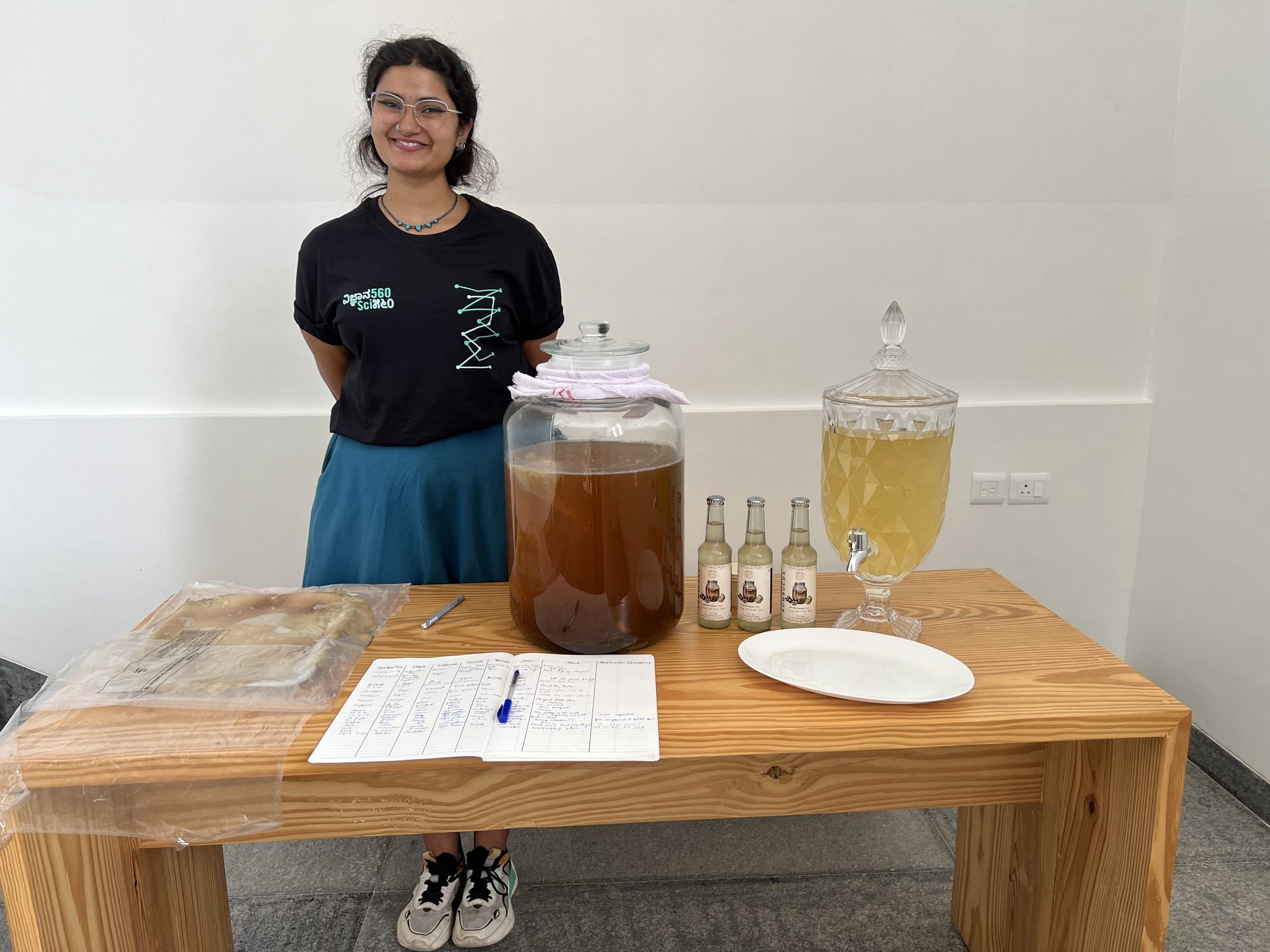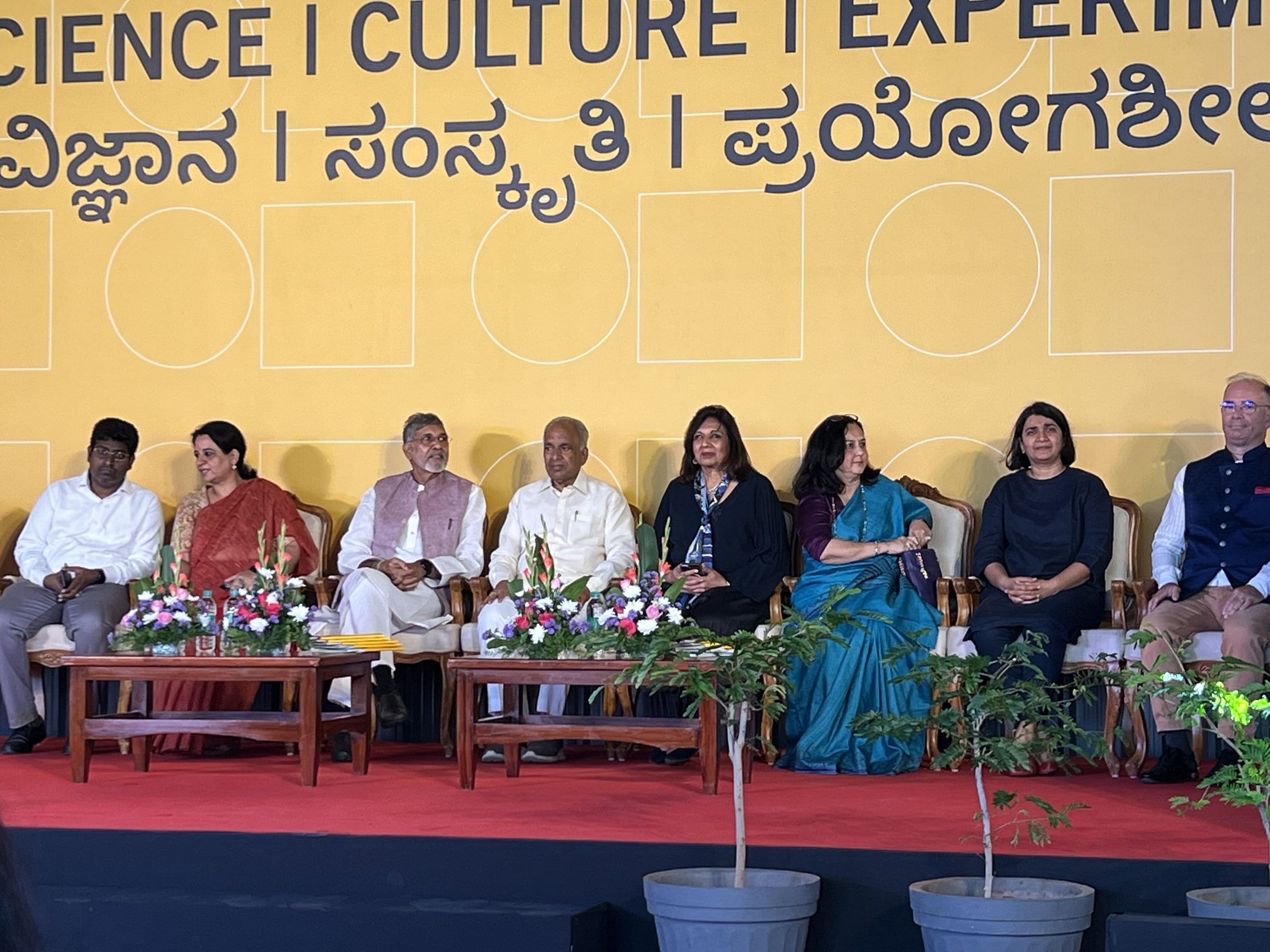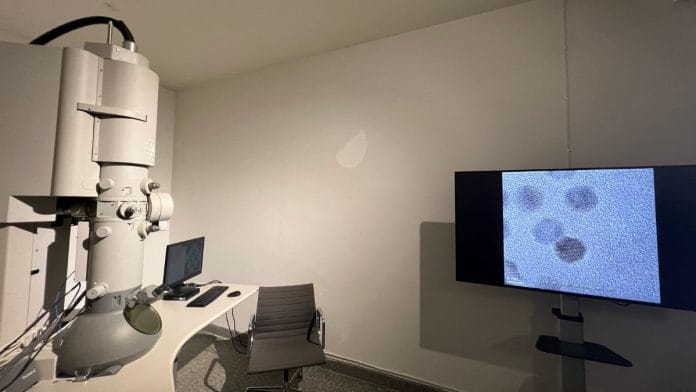Bengaluru: The very first airplane to be built and flown in India. CV Raman’s tablas with scrawled dissertations displayed beside them. These significant slivers of Bengaluru’s scientific history are now on display for six months at the city’s Science Gallery. They’re part of a temporary exhibition, aptly called Sci560—an amalgamation of the city’s postal code, 560, and a play on ‘sci-fi’.
Even before it became India’s Silicon Valley, Bengaluru was at the forefront of science and technology, contributing to the country’s research, industry, and even the military. It is with this in mind that Science Gallery Bengaluru (SGB) invited the world-famous research institutes based in the city to contribute one curated physical object each from their own collections.
The plane came from from the Indian Institute of Science (IISc) while the tabla set from the Raman Research Institute. There’s also a state-of-the-art electron microscope scanning through the brain of a mouse from the Jawaharlal Nehru Centre for Advanced Scientific Research (JNCASR) along with interactive experiments, astrophysical equipment, wind tunnels that studied fruit flies, and even a live kombucha brew setup to demonstrate the brewing phases of the drink among other exhibits.
The unique and innovative idea for such an interactive display was conceived by philanthropist Rohini Nilekani, who brought together heads of various institutes last year to get the wheels in motion.
“Our mandate is to build a relationship with the public, and we wanted to do it in an interactive way without it becoming a one-way street,” explained the founding director of SGB, Jahnavi Phalkey. “The gallery has equal dedication to labs as well as engagement. We have two labs open now, and four more to open by next year.”
The “hybrid” exhibition at the Science Gallery, located on Bellary Road, includes interactive workshops, experiments in lab spaces, and other events every weekend. Together they show the history of how the city rose rapidly into the domains of military, science, tech, and research, which was followed by the rise of the global first in electronics, IT, biotechnology, and more, changing the landscape of the country.
At the opening ceremony on 25 August, Karnataka’s Minister for Science and Technology NS Boseraju said that the necessary support required to keep the gallery successful will be provided by the government, while he presented Phalkey and the Gallery with an unprompted surprise cheque of Rs 10 crore as a testament to the work the Gallery has been doing.
“I have never been to such an exhibition where there are historic items going back decades, and touched by such legends, all placed together under one roof and somehow all interconnected,” said 23-year-old Shamili Rao, a visiting neuroscience student.
A dose of science history
Public and private institutes including ten partner research institutes of the Gallery have contributed to the exhibition with displays spread out across three floors. One of the popular exhibits was the contribution from the Raman Research Institute and the International Centre for Theoretical Sciences. It allowed visitors to interact with manual and electrical Chladni plates where sound vibrations produced patterns on a surface, with handfuls of sooji sprinkled on it. Everyone wanted to have a go at sliding a violin bow on the edge of the display plate and make different patterns.

Trained mediators, having previously worked with scientists and artists to understand the interactive exhibits, explained the science behind every action and object. It’s aligned with the overarching goal of science communication. The exhibit has also been made fully accessible in the state language of Kannada, with bilingual descriptions for non-English speakers and audience.
The Indian Institute of Astrophysics displayed an altitude and azimuth instrument that was used for navigation around the year 1850. It was also used to calculate the height of Mt. Everest.
The Azim Premji University presented basic science textbooks that had obsolete or culturally interesting perspectives from the years 1836 to 1974, inviting visitors to read and examine tools of pedagogy, and also use colorful stickers and post-its to put down their thoughts.
The Madras Engineer Group of the Indian Army contributed with records of the Bangalore Torpedo, an explosive charge that was used to clear obstacles in the First World War, and Benglauru’s role in creating it. The National Centre for Biological Sciences (NCBS), meanwhile, offered a powerful two-photon galvo-scanning microscope that showed how mice’s brains measure the passage of time. The Indian Institute of Science and HAL together displayed the HAL HT-2, a trainer aircraft, which rapidly turned into a popular selfie spot.
“We saw the plane right here and had to walk in, of course, and what a pleasant surprise inside. The legacy of science shown here is tremendous, and it’s beautiful that so many of us who live in the city can now know all about its rich scientific history by coming here,” said 53-year-old Das, who walked in with his brother’s family on an impulse.
The Gallery team tapped private labs and individuals as well to enrich the exhibition. Previously unseen photos of Homi Bhabha and BV Sreekantan’s cosmic ray muon research experiments in the mine shafts of Kolar Gold Fields to detect neutrinos were provided by the Sreekantan family.
Artist Jenifer Wightman set up an artistic display of lake and soil samples from the city, filled with bacteria and left to grow in transparent containers for open observation. Scoby Labs explored the process of making kombucha, inviting people to sample the drink at different steps of fermentation.
Aditi Rajesh Narayanan, a commerce graduate who is now working for the Gallery and utterly fascinated by the science there, was the mediator at the kombucha station. She enthusiastically explained to everyone the process of fermentation and brewing, as she passed along samples.

There is yeast and bacteria here in the tea, she told visitors, pointing to the containers as well as a flat bacterial culture kept covered on the side, comparing the different stages of the liquid on the table.
“It’s been a great experience so far, we’ve had a month and a half of training, and it’s like college all over again but we’re sitting in science classes. It’s been amazing,” said Narayanan.
Nearby, a group of visitors sat down to relax by solving jigsaw puzzles of microscopic images of viruses and cells.
Sci560 encourages visitors to come back for another dose of science history. When Shamili returned on Sunday with more friends, the Gallery was teeming with hundreds of English and Kannada speaking visitors. With word spreading rapidly and citizens rolling in all day, the crowd sizes more than tripled on Sunday.
“We had four times the number of registrations expected for a Kannada walkthrough and seven times the number for the English walkthrough,” said Phalkey. “It’s a bit mad. But it feels good.”
Also read: At 90, scientist CNR Rao is still driving breakthroughs at JNCASR. More research, less red tape
Demystifying science
At the entrance into the Gallery sits a board that explains the purpose of the exhibition, and asks the most pertinent question — why is Bengaluru a military-industrial-academic complex, and what does that mean?
Each of the displays also offer information on Bengaluru’s roster-list of institutions— the Defence Research and Development Organisation (1958), the National Aerospace Laboratories (1959), the Indian Space Research Organisation (1972), Hindustan Aeronautics LImited (1940), Indian Telephone Industries (1948), Hindustan Machine Tools (1953), Bharat Electronics Limited (1954), and Bharat Earth Movers Limited (1964) — that were established in the city pre- and post-independence, giving rise to India’s modern era technology.
One of the historic displays is the Simputer from Bharat Electronics Limited, which is a handheld Linux-based mobile device with a smart card that was invented at the Indian Institute of Science in 1998. It was one of the earliest devices to be equipped with an accelerometer, a touchscreen, USB ports, a smart card, and more. It was marketed as a simple, inexpensive, multilingual, and handheld people’s computer. The devices were used by the Karnataka government to digitise land records, by the Chhattisgarh government for online education, and by companies for money transfer.
Co-inventor of the Simputer Vijay Chandru was standing and observing visitors interacting with the different models of his invention and seeing young mediators explain its uses and history. He was impressed.
“They [mediators] have done their homework and spent time with Prof Swami Manohar and some of the technical leads of the Simputer project to understand what had gone into it. They were able to explain why it was so far ahead of the pack in mobile computing and access to the internet, and why Nobel Laureate Muhammad Yunus called it ‘Alladin’s lamp for the poor’,” he told ThePrint.

The exhibits, free for anyone to walk in and interact with, have an air of associating research with the city, a design purposefully incorporated into the entire Gallery.
“Science Gallery Bengaluru is Asia’s first science culture experiment, and it’s unique for the way it demystifies science,” said benefactor and biotechnologist Kiran Mazumdar–Shaw at the launch.
“We need an informed citizenry for what science is about, we need to kindle the interest of science in young minds above all else.”
Fellow investor and patron Rohini Nilekani echoed the sentiments, explaining how she had come to the city as a young journalist, and attempted to connect the art, culture, and science around to the city itself.
“Science Gallery Bengaluru is a wonderful example of public-private partnership, where citizens can walk in and engage with science,” she said. “So much has been created in the city and the citizens have benefited from it. It is time for the city’s elite to step up even more to show what the city should be.”
(Edited by Aamaan Alam Khan)






